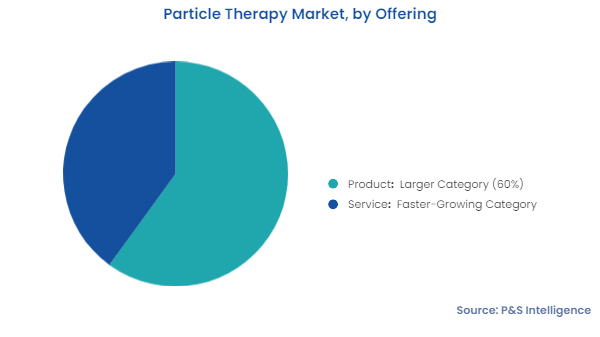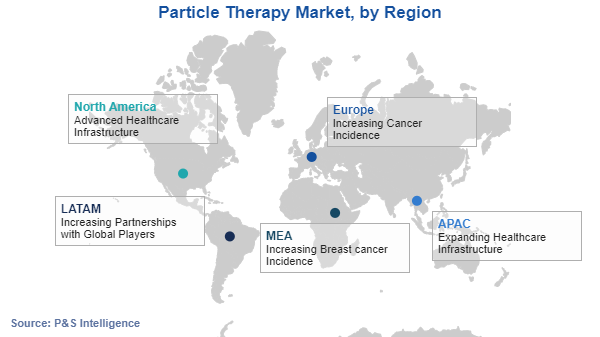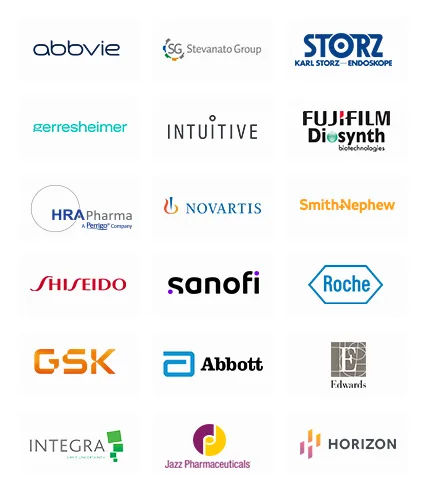Particle Therapy Industry Insights
By Type
- Proton therapy will hold the larger market share, of 70%, in 2024, and it is projected to witness the higher CAGR, of approximately 8.8%, in the forecast period.
- This is ascribed to the high adoption of this therapy for treating various cancers, such as pediatric cancer, brain tumors, and breast cancer.
- According to the WHO, breast cancer caused 670,000 deaths globally in 2022.
- Nowadays, proton therapy is employed during all stages of breast cancer treatment owing to several benefits, such as effective depth-dose distribution and high linear energy distribution (LET) of charged particles, which lead to the formation of DNA lesions in such a way that it is difficult for them to repair themselves.
- Moreover, hospitals and academics & research centers are focusing on the high adoption of proton therapy equipment in comparison to the heavy ion therapy equipment due to the low installation cost of the former, which targets ions directly at the tumor, without affecting the normal healthy body cells.
- In addition, the treatment time in the case of proton therapy is quite less with minimal side-effects. Because ions are much heavier than protons, the cost of constructing a heavy ion therapy center is higher than that of proton therapy.
- Moreover, the total health spending for the treatment of pediatric cancer through the use of proton therapy is less in comparison to radiation therapy.
The types analyzed in this report are:
- Proton Therapy (Larger and Faster-Growing Category)
- Heavy Ion Therapy
By Offering
- The system category will hold the larger market share, of 60%, in 2024 owing to the rising adoption of cyclotrons in various hospitals, coupled with the various advantages offered by them such as low cost.
- In addition, the rising inclination toward nuclear scans for diagnosis and the accessibility of technologically advanced diagnostic devices drive the market growth in this category.
- Additionally, most of the particle therapy facilities globally focus on the employment of cyclotrons in comparison to synchrotrons, due to their low cost, coupled with small size.
- For instance, around 60% of the European countries utilize cyclotrons for beam production in their proton therapy facilities, 25% use synchrotrons, and around 15% use synchrocyclotrons.
- Service is the faster-growing category, in the forecast period, driven by the increasing adoption of advanced proton and carbon ion therapy systems.
- The increasing proliferation of these systems has led to a surge in the need for all-encompassing maintenance and support services, which guarantee their smooth functioning and minimize downtime.

The offering analyzed in this report are:
- Product (Larger Category)
- Cyclotrons
- Synchrotrons
- Synchrocyclotrons
- Service (Faster-Growing Category)
By System
- The single-room systems category is expected to witness the higher CAGR, of around 8.9%, in the forecast period, due to the low cost per treatment and low development cost of a single-room facility.
- Single-room systems are becoming increasingly popular among smaller healthcare facilities and institutions due to their affordability.
- For instance, as per a government source, the cost of a single-room facility is around USD 30 million, which is comparatively higher in the case of a multi-room facility that can cost around USD 100 million.
- Multi-room systems will hold the larger market share, in 2024 due to their ability to treat multiple patients simultaneously and accommodate more-complex treatment setups.
- Multi-room systems' prominence is also a result of their scalability and ability to interface with advanced imaging and treatment planning software.
The systems analyzed in this report are:
- Multi-Room (Larger Category)
- Single-Room (Faster-Growing Category)
By Cancer Type
- Pediatric cancer will account largest revenue share in 2024, the largest in the segment, and the category is projected to record the fastest growth, in the forecast period due to its high prevalence across the world.
- Particle therapy is mostly employed in the treatment of pediatric patients due to the high mitosis rate in children, which requires therapy that directly targets the tumor with few long-term side effects.
- It provides high precision and radiation control with almost no exposure to normal body cells.
- For instance, as per the NIH, more than 400,000 cases of pediatric cancer, such as brain cancer, leukemias, solid tumors, and lymphomas, are witnessed every year, globally.
The cancer types analyzed in this report are:
- Pediatric (Largest and Fastest-Growing Category)
- Prostate
- Lung
- Breast
- Head and Neck
- Others
By Application
- The treatment category will hold the larger market share, of 65%, in 2024 due to its applications in cancer treatment, where it provides accurate treatment than traditional radiation therapy.
- This precision is achieved through the ability of particle beams, such as protons and carbon ions, to deliver targeted radiation doses directly to tumors, while sparing surrounding healthy tissues.
- An increasing number of cancer cases and a growing need for advanced, patient-specific treatment choices that reduce side-effects and enhance outcomes are driving increased demand for particle therapy.
- The research category will grow at a CAGR of 9.0% during the forecast period.
- This is because researchers are investigating novel uses for particle therapy, such as possible applications in the treatment of neurological illnesses and other complicated medical conditions to go beyond conventional cancer treatment.
- This focus on research is essential for advancing the field of particle therapy, as it seeks to overcome existing limitations, broaden clinical indications, and ultimately provide more effective and personalized treatment options for patients.
The applications analyzed in this report are:
- Treatment (Larger Category)
- Research (Faster-Growing Category)
By End User
- Hospitals will hold the larger market share, in 2024 because they are the primary facilities where particle therapy is administered, given their capacity to handle complex treatment procedures and their broad patient base.
- In order to provide advanced treatment choices and meet the growing demand for advanced cancer care, hospitals with specialist cancer treatment centers frequently invest in particle therapy systems.
- Academic & research centers will grow at a higher CAGR in the forecast period because these institutions are leading the way in the creation of novel technologies and particle therapy treatment approaches.
- Through investigating novel applications, enhancing current technology, and carrying out clinical trials, their emphasis on research and development seeks to progress the field.
The end users analyzed in this report are:
- Hospitals (Larger Category)
- Academic & Research Centers (Faster-Growing Category)
Geographical Analysis
- Europe will account for the highest revenue, of 35%, in 2024 and register the highest CAGR, of around 9.3%, in the forecast period, due to the rising number of particle therapy facilities providing clinical operations in the region.
- For instance, more than 50% of the particle therapy centers are present in Europe, globally.
- This is because of the favorable government policies and the presence of technologically advanced solutions for disease diagnosis. In addition, the presence of a large number of distribution channels also drives the market growth in the region.
- Germany, the U.K., and Spain are the major users of particle therapy systems in the continent.
- This is attributed to the rising number of cancer cases and the presence of prominent players in these countries.
- For instance, around 280,000 new cases of cancer were diagnosed in Spain in 2023.

The regions and countries analyzed in this report are:
- North America
- U.S. (Larger and Faster-Growing Country Market)
- Canada
- Europe (Largest and Fastest-Growing Regional Market)
- Germany (Largest Country Market)
- U.K.
- France
- Italy (Fastest-Growing Country Market)
- Spain
- Rest of Europe
- Asia-Pacific (APAC)
- China
- India
- Japan (Largest and Fastest-Growing Country Market)
- Australia
- South Korea
- Rest of APAC
- Latin America (LATAM)
- Brazil (Largest Country Market)
- Mexico (Fastest-Growing Country Market)
- Rest of LATAM
- Middle East and Africa (MEA)
- Saudi Arabia (Largest and Fastest-Growing Country Market)
- South Africa
- U.A.E.
- Rest of MEA



